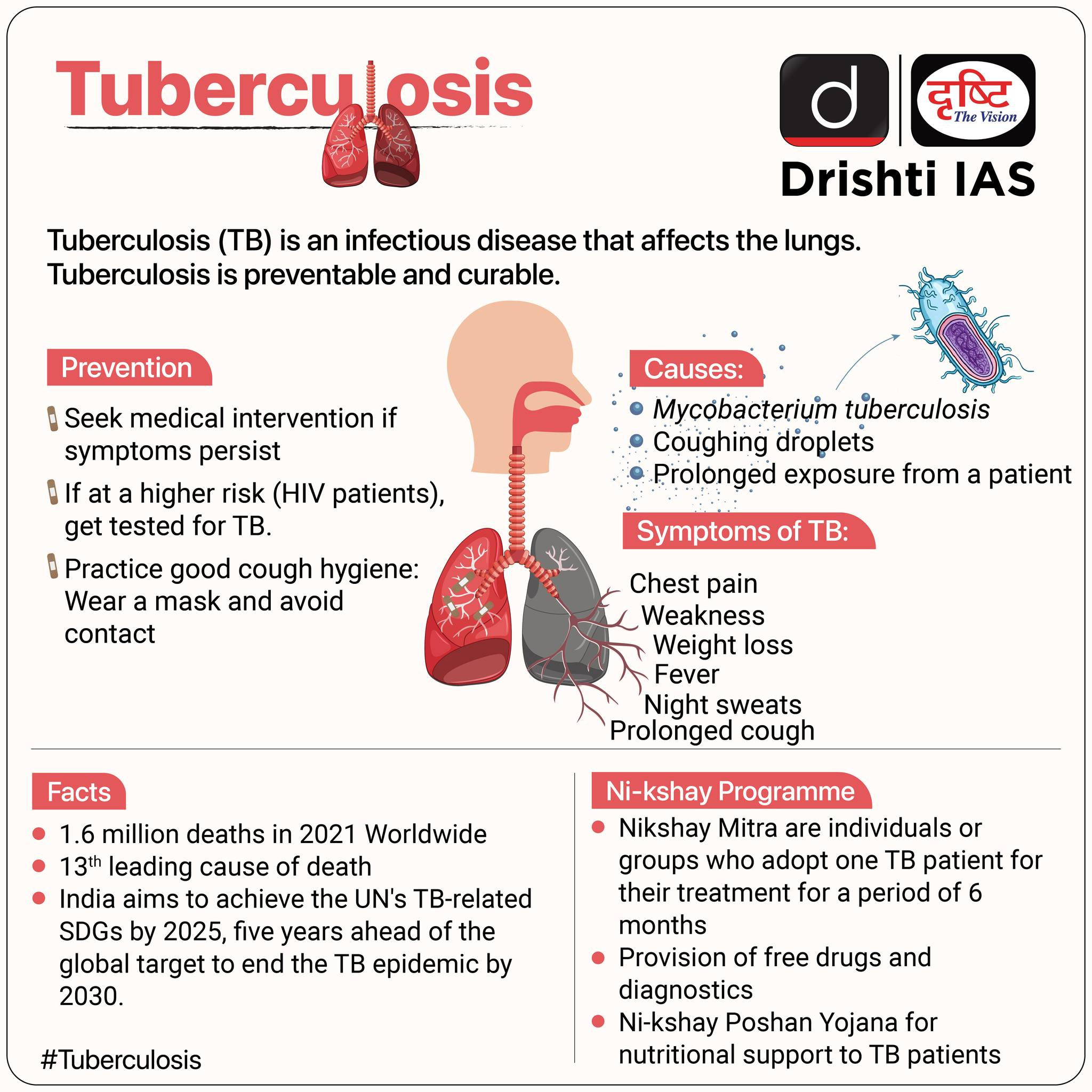Important Facts For Prelims
HeroRATS for Tuberculosis Elimination
- 03 Mar 2025
- 5 min read
Why in News?
A Tanzanian non-profit organization conducts research to train African giant pouched rats, or HeroRATS, to detect Tuberculosis (TB).
- These rats show high accuracy, especially in resource-limited areas. This research could help speed up TB detection in countries like India.
What are the Key Findings of the Research on HeroRATS?
- HeroRATS: These rats have an exceptional sense of smell due to their sensitive olfactory receptors, allowing them to detect diseases like TB.
- HeroRATS undergoes a training program, learning to detect TB in sputum samples (thick mucus from lungs). They can screen 100 samples in just 20 minutes, compared to 3–4 days for traditional methods.
- Detected samples are then confirmed using Ziehl-Neelsen and fluorescent microscopy.
- HeroRATS undergoes a training program, learning to detect TB in sputum samples (thick mucus from lungs). They can screen 100 samples in just 20 minutes, compared to 3–4 days for traditional methods.
- Increased Detection Rates: HeroRATS doubled TB detection rates in children compared to conventional testing.
- The rats were six times more effective at detecting TB in patients with a low bacillary load compared to those with a higher concentration of bacteria.
- They outperformed traditional microscopy, which often fails in such cases.
Note: Earlier, Magawa, a Tanzanian-born African giant pouched rat, was trained to detect landmines and alert handlers for their safe removal.
How can HeroRATS Help India’s TB Elimination Efforts?
- Potential Benefits for India: HeroRATS provide fast, cost-effective TB screening, especially for children and smear-negative cases, aiding early diagnosis and reducing transmission, thereby contributing to lowering the TB burden in India.
- Integrating rat-based TB detection into the National Tuberculosis Elimination Programme (NTEP) through a phased rollout, starting in high-TB burden states, can enhance case detection.
- TB in India: India has the highest burden of TB with two deaths occurring every three minutes from TB.
- NTEP, implemented under the aegis of the National Health Mission, aims to make India TB-free by 2025, ahead of the global 2030 target.
- TB incidence declined by 17.7% (237 to 195 per 100,000) from 2015 to 2023, while TB deaths fell by 21.4% (28 to 22 per lakh).
What are the Key Facts About Tuberculosis?
- About: TB is a bacterial infection (Mycobacterium tuberculosis) affecting the lungs, spreading through the air.
- Preventable and curable with antibiotics. About 25% of the global population is infected, but only 5–10% develop symptoms.
- Risk Factors: Weak immune system, diabetes, malnutrition, tobacco, and alcohol use.
- Diagnosis: WHO recommends rapid molecular tests (Xpert MTB/RIF Ultra). Traditional methods struggle with low bacterial loads, especially in children difficult due to their inability to produce sufficient sputum for testing.
- Prevention: The Bacille Calmette-Guérin (BCG) vaccine is given to infants to prevent TB.
- Treatment: Standard TB treatment lasts 4-6 months. Incomplete treatment leads to drug-resistant TB.
- Multidrug-resistant TB (MDR-TB): It is resistant to isoniazid and rifampicin (medicines used to treat TB), treatable with costlier alternatives.
- Extensively Drug-Resistant TB: It is more severe, with limited treatment options.
- TB and Human Immunodeficiency Virus (HIV): HIV patients are 16 times more vulnerable to TB, a leading cause of their deaths.
Macromatic Species Used for Disease Detection
- Macromatic Species: These species have a highly developed sense of smell, unlike microsmatic species with a reduced olfactory ability. Few macromatic species are:
- Dogs: With 125–300 million olfactory receptors and a special sensory organ called the Jacobson’s organ, they can detect diseases like Parkinson’s and potentially lung cancer and diabetes.
- Ants: A French study found ants can detect cancer cells within three days using chemical cues, offering a faster, cheaper alternative to traditional diagnostics.
- Honeybees: Posses highly sensitive olfactory antennal lobes, can detect lung cancer, with 88% accuracy using synthetic biomarkers (artificial human breath that contains cancerous odours) in human breath.
- These highlight the growing field of bio-detection, where nature’s instincts are harnessed for medical advancements.





